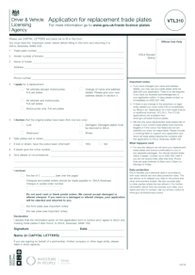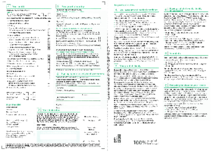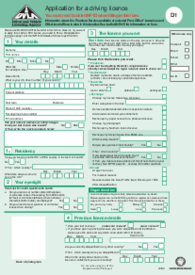-
Templates
1099 FormsAccurately report 1099 information returns and ensure IRS filing with easeExplore all templatesW-9 W-8 FormsEasily manage and share taxpayer details to streamline payments and meet IRS requirements with confidenceExplore all templatesOther Tax FormsFillable tax forms simplify and speed up your tax filing process and aid with recordkeeping.Explore all templatesReal EstateReal estate templates for all cases, from sale to rentals, save you a lot of time and effort.Explore all templatesLogisticsSimplify your trucking and logistics paperwork with our ready-to-use transportation and freight templates.Explore all templatesMedicalMedical forms help you keep patient documentation organized and secure.Explore all templatesBill of SaleBill of Sale templates streamline the transfer of ownership with clarity and protection.Explore all templatesContractsVarious contract templates ensure efficient and clear legal transactions.Explore all templatesEducationEducational forms and templates enhance the learning experience and student management.Explore all templates
-
Features
FeaturesAI-Enhanced Document Solutions for Contractor-Client Success and IRS ComplianceExplore all featuresAI Summarizer Check out the featureAI PDF summarizer makes your document workflow even faster. Ask AI to summarize PDF, assist you with tax forms, complete assignments, and more using just one tool.Sign PDF Check out the featurePDFLiner gives the opportunity to sign documents online, save them, send at once by email or print. Register now, upload your document and e-sign it onlineFill Out PDF Check out the featurePDFLiner provides different tools for filling in PDF forms. All you need is to register, upload the necessary document and start filling it out.Draw on a PDF Check out the featureDraw lines, circles, and other drawings on PDF using tools of PDFLiner online. Streamline your document editing process, speeding up your productivity
- Solutions
- Features
- Blog
- Support
- Pricing
- Log in
- Sign Up
Register your vehicle if it s newly imported (form V267)
Get your Register your vehicle if it s newly imported (form V267) in 3 easy steps
-
01 Fill and edit template
-
02 Sign it online
-
03 Export or print immediately
Understanding Imported Vehicle Registration
Embarking on the journey of registering your newly imported vehicle in the UK can be both exciting and filled with necessary procedures. Understanding the nuances of imported vehicle registration is crucial to ensure a smooth process.
The first step in this endeavor involves familiarizing yourself with the specific requirements and regulations that govern the registration of imported vehicles. When delving into the realm of Imported Vehicle Registration, one must be prepared to gather essential documents to satisfy regulatory standards.
These documents include Proof of Ownership, which verifies your legal right to register the vehicle, as well as Proof of Vehicle Identity, crucial for ensuring that the vehicle's identity matches its documentation. Having these documents in order will streamline the registration process and prevent any unnecessary delays or complications.
Navigating through the intricate process of registering an imported vehicle entails interacting with regulatory bodies such as the Driver and Vehicle Licensing Agency (DVLA) in the UK. The DVLA serves as a central authority overseeing vehicle registrations and ensures compliance with national standards.
Familiarizing yourself with their guidelines and procedures will help you navigate through each step efficiently. It's essential to establish communication channels with DVLA representatives to address any queries or concerns throughout the registration process promptly.
Documents and Approvals Needed
- When it comes to registering your newly imported vehicle in the UK, understanding the specific requirements for documents and approvals is crucial. The Driver and Vehicle Licensing Agency (DVLA) has a set of criteria that must be met to ensure a smooth registration process for your imported vehicle.
- One essential document you will need is proof of ownership, which establishes your legal right to register the vehicle. This can typically be in the form of a bill of sale, certificate of title, or other official documentation that clearly identifies you as the owner.
- In addition to proof of ownership, you will also need to provide proof of the vehicle's identity. This includes documents such as the vehicle's VIN (Vehicle Identification Number), chassis number, and any relevant importation paperwork.
- These details are vital for verifying the authenticity and origin of your imported vehicle. Ensuring that all identification information matches up accurately with the DVLA's records is crucial in expediting the registration process.
- Furthermore, specific approvals may be required depending on the nature of your imported vehicle. For instance, if you are declaring your imported vehicle as new through Form V267 (UK), additional documentation may be necessary to support this claim.
- It's essential to review all requirements carefully and gather all relevant paperwork before submitting your application for registration. By being thorough and organized in preparing your documents and approvals, you can help streamline the process and ensure that your newly imported vehicle is registered correctly with the DVLA.
Declaring Your Imported Vehicle as New (if applicable)
- When it comes to registering an imported vehicle in the UK, there is an advantage to declaring your vehicle as new - if it meets the criteria outlined by the Driver and Vehicle Licensing Agency (DVLA). This option is particularly beneficial for those who have recently acquired a brand-new vehicle from overseas or have imported a vehicle that has never been registered before. By declaring your imported vehicle as new, you are ensuring that it is accurately classified in the DVLA's records, reflecting its true status and providing a fresh start in terms of registration.
- To declare your imported vehicle as new, you will need to provide proof of ownership along with all relevant documentation required by the DVLA. This may include original invoices, bills of sale, or registration documents from the country of origin.
- By submitting these documents along with Form V267 (UK), you are officially notifying the DVLA that your imported vehicle should be considered new for registration purposes. This step is crucial in establishing the legitimacy and authenticity of your vehicle within the UK's registration system.
- One key benefit of declaring your imported vehicle as new is the streamlined process it offers for registration. By classifying your vehicle as new at the time of importation, you avoid potential complications that may arise from registering a used or pre-owned vehicle later on.
- This not only simplifies the paperwork involved but also ensures that your vehicle registration reflects its true status accurately. With Form V267 (UK) serving as the official document for declaring your imported vehicle as new, you can confidently navigate the registration process with clarity and efficiency.
The UK Driver and Vehicle Licensing Agency
When it comes to registering an imported vehicle in the UK, partnering with the Driver and Vehicle Licensing Agency (DVLA) is crucial. The DVLA is the official organization responsible for maintaining a database of drivers and vehicles in Great Britain.
They play a key role in ensuring that all vehicles on the road are properly registered and meet legal requirements. Partnering with the DVLA means engaging with their processes and guidelines to ensure a smooth registration process for your newly imported vehicle.
One of the first steps when partnering with the DVLA for vehicle registration is to provide proof of vehicle identity. This includes documents such as the Vehicle Registration Certificate (V5C), also known as the logbook, that proves ownership and registration details of the imported vehicle.
Additionally, any relevant import paperwork should be submitted to verify the vehicle's origins and compliance with UK regulations. The DVLA may request specific information or documentation depending on the nature of your imported vehicle, so it's essential to have all necessary paperwork in order.
To begin your registration process with the DVLA, you can download Form V267 (UK) from their official website or request a physical copy by contacting their office. This form is specifically designed for declaring an imported vehicle as new, which is optional but recommended for seamless integration into the UK vehicle registration system.
By filling out Form V267 accurately and providing all required information, you can expedite the registration process and ensure that your imported vehicle meets all legal requirements set by the DVLA. Once completed, you can either send the form electronically or submit it via mail to initiate your imported vehicle's registration journey with confidence in partnership with this esteemed regulatory body.
Beyond the Paperwork: Additional Considerations
When considering the registration of a newly imported vehicle using Form V267 (UK), it is crucial to delve into the additional considerations beyond the paperwork. One essential aspect to address is ensuring that you have all necessary proof of ownership documents in order. This documentation typically includes the bill of sale, import papers, and any other relevant paperwork that establishes your ownership of the imported vehicle.
Without sufficient proof of ownership, your registration process may face delays or complications. Moreover, it is advisable to download and thoroughly review any official guidelines or information provided by the Driver and Vehicle Licensing Agency (DVLA) (UK).
These resources can offer valuable insights into specific requirements or procedures related to registering an imported vehicle using Form V267. By being well-informed about the process, you can navigate through potential challenges more effectively and ensure a smoother registration experience.
In addition to paperwork requirements, consider obtaining proof of vehicle identity documents for validation purposes. These documents serve as a means to verify the authenticity and legitimacy of your imported vehicle during the registration process.
Whether it involves providing VIN numbers, chassis numbers, or other identifying details, having accurate proof of vehicle identity can streamline your application for vehicle registration using Form V267 (UK). By attending to these additional considerations diligently and proactively, you can enhance your chances of completing the registration process successfully and enjoying your newly imported vehicle on UK roads without unnecessary delays.
Completing Form V267: A Step-by-Step Guide
Completing Form V267 (UK): A Step-by-Step Guide: To successfully register your newly imported vehicle in the UK, you will need to carefully complete Form V267.
This crucial document serves as a declaration of your imported vehicle's status and ensures that it complies with all necessary regulations. Before diving into the form, ensure you have gathered all required documents, including Proof of Ownership, Proof of Vehicle Identity, and any additional paperwork related to the specific circumstances of your Imported Vehicle.
Once you have these in hand, you are ready to begin filling out Form V267. The DVLA website is an invaluable resource for accessing Form V267 (UK) in either printable or downloadable pdf format.
By visiting the DVLA's official site, you can easily locate and obtain the latest version of the form tailored to registering Imported Vehicles. Ensure that you are using the most up-to-date edition to avoid any discrepancies during the registration process.
Familiarize yourself with each section of Form V267 before starting to fill it out, as accuracy is paramount when providing information about your New Vehicle (optional). Take your time going through each field on the form and double-checking that all details are entered correctly to prevent delays or complications down the line.
Once you have completed Form V267 accurately and thoroughly, it's time to send it off for processing by the DVLA. Follow the instructions provided on their website regarding submission methods and any accompanying documents that may be required alongside your application.
After sending in your completed form along with all necessary paperwork, keep track of its progress through communication channels provided by DVLA. Stay proactive in ensuring that your Vehicle Registration is processed efficiently and effectively so that you can soon enjoy driving your newly imported vehicle on UK roads without any administrative hurdles looming over your journey ahead.
Conclusion
Successfully registering your newly imported vehicle with the DVLA is a crucial step in ensuring the legality and compliance of your vehicle on UK roads. By following the detailed guidelines outlined in this article and submitting all necessary documentation, you are not only fulfilling legal obligations but also guaranteeing a smooth transition for your vehicle into the UK registration system. Remember that accuracy and completeness are key when filling out Form V267, as any discrepancies could lead to delays or complications in the registration process.
While navigating the paperwork and requirements for registering an imported vehicle may seem daunting at first, it is important to approach this task with patience and diligence. The DVLA is there to assist you every step of the way, providing guidance and support to ensure that your registration process goes as smoothly as possible.
With proper documentation in hand, including proof of ownership and proof of vehicle identity, you can confidently submit your application knowing that you have met all necessary criteria. As you embark on this journey to register your newly imported vehicle, remember that compliance with regulations not only ensures legal operation but also contributes to road safety and accountability.
Embrace this opportunity to showcase your commitment to responsible vehicle ownership by promptly sending in all required documents and information. By completing Form V267 accurately and thoroughly, you are paving the way for countless adventures on UK roads with your imported vehicle - a true testament to both your passion for automobiles and dedication to following proper procedures in collaboration with the DVLA.
Fillable online Register your vehicle if it s newly imported (form V267)


































































